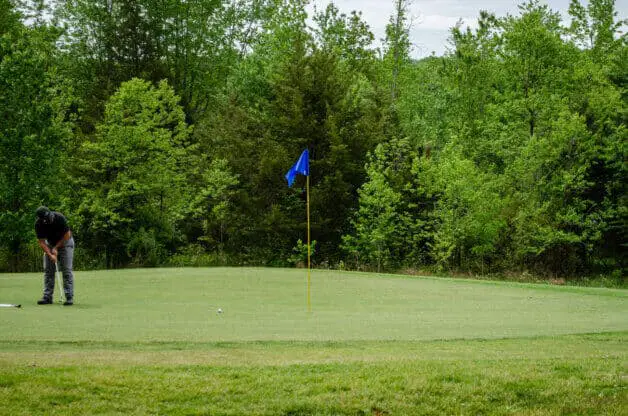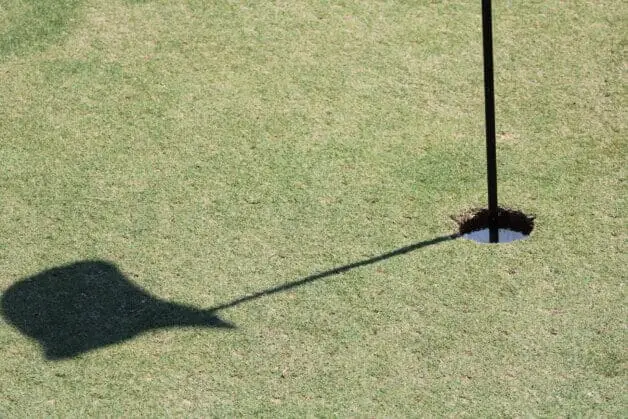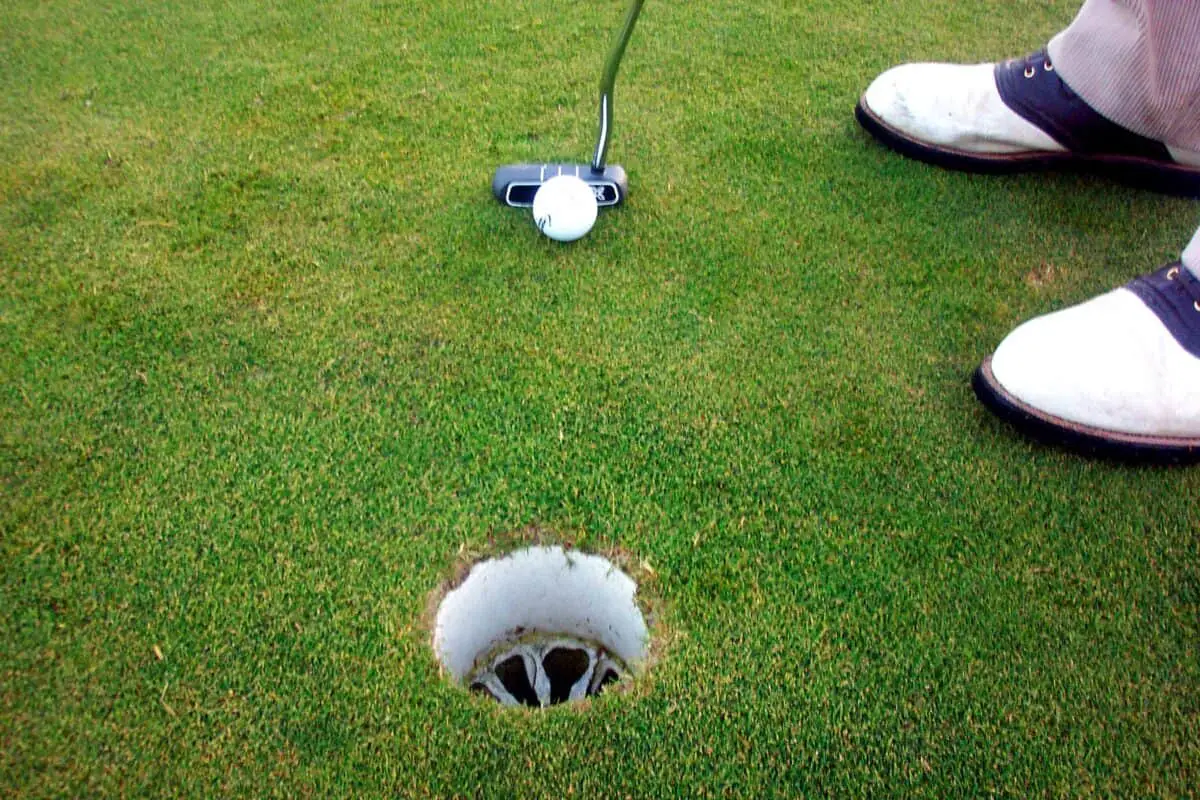One of the many great things about playing golf is the multitude of fun tournament competitions in which you and your friends can compete. While golf has a fairly straightforward format, there are many alternative formats that can add up to a very fun day playing in alternative golfing tournaments. A shamble tournament combines the scramble and best-ball formats.
The format is based on two-golfer teams but often includes four-person teams to maximize the fun. It even can have teams made of two players going up against teams comprised of three and four players. The idea is to let people choose their own teams and then enter into a fun and exciting shamble golf event that lets them interact, network, have lot of fun and raise money for charitable causes.
Because the golf shamble combines the golf scramble with the best-ball format, it also is referred to as a bramble golf event. No matter how it is termed, here is a closer look at the very fun format and how it works.
Golf Shamble vs Scramble
A scramble golf event is a true team format in that each golfer essentially hits from the same tee and the same lie. Each team member tees off and then the team chooses which ball they want to play. The balls they choose not to play get picked up and those strokes are ignored.
The golfer whose shot created the preferred position will hit the next golf shot from that specific lie. Other team members can take shots from one club length away from the lie. This is the scramble portion of the golf shamble, but the rest of the hole plays out like a best-ball event.
Ultimately, the shamble format is designed to create a mix of playing your own ball and leaning on your teammates. That is why the shamble golf format also applies the scramble portion to the second shot on par 5 holes. That helps to speed up play by giving everyone on the same team the chance at a good approach shot to the green.
After all team members take their respective swings, they choose which lie to play until the ball goes into the cup and ends the hole. However many strokes it took to get the ball into the cup is the team’s score for that hole.

The scramble format quickens the pace while enabling teams to combine for scores that might rival a professional’s score with no handicap. Instead of having one player scoring par or better, one or more players likely will get a bogey, double bogey, or worse, and greatly slow down the playing pace. That format also could lead to a lot more frustration instead of a truly enjoyable time playing a great team golfing event.
Best Ball Golf Format Explained
A best-ball competition has teams of two to four golfers who all play out each hole like they normally would under a normal golfing format. Each player tees off and plays his or her respective ball until sinking the putt or otherwise putting the ball in the cup. When all team members have completed the hole, the lowest score posted by team members becomes the entire team’s score for the hole.
The best-ball format is a very popular one that helps a struggling player still do well in a tournament competition and help out the entire team on one or more holes with the best score for that hole.
Golf Shamble Format Combines the Best of Both
With the shamble format you start with the standard scramble from the tee. That gives every player the best chance at having a reasonably good chance at making a nice approach shot on a par 4 or a par 5 hole.

Depending on the tournament organizer’s preference, the scramble might apply to the second shot on par 4 holes and the third shot on par 5 holes. That is so that the game goes a bit faster while still setting up relatively good approach shots on just about every hole.
What is a Bramble in golf?
Another common name for the shamble format is the bramble golf format. The “b” represents that best-ball aspect of the game following the initial scramble off of the tee. Once the scramble portion is done, the best-ball aspect takes over and plays out the hole under what is essentially best-ball rules. With such an emphasis on format rules that more closely resemble best ball, the “bramble” name became synonymous with the shamble format.
The bramble and shamble are very popular at community golf courses and country clubs alike. They also are very good ways to operate very fun golf tournaments to raise money for charitable causes. When businesspeople can get an afternoon on the links while networking and helping to raise money for a local charity, the shamble and bramble golf events.
Play on 3-Par Holes
The scramble portion of the golf shamble only applies to tee shots on par 4 and par 5 holes. When playing a par 3, the tee is the approach shot, so there is no sense in starting with a scramble. Instead, the par 3 follows the best-ball format with the player whose score is lowest representing the entire team’s score for that hole. Obviously, a birdie or an ace would be preferable, but smart teams will have one or more players use a conservative approach for at least par while another can go more aggressively and try to ace it.
Applying Player Handicaps
When it comes to the individual player handicaps, they do affect the team score. A typical golf shamble might reduce individual handicaps by between 10 and 20 percent, but still would apply them to help level the playing field between recreational golfers and more serious ones with low handicaps or none at all.

Ultimately, the tournament organizer determines the extent to which a handicap applies. Many events might apply an individual player’s entire handicap to the final score for a hole and determine whether or not that score represents the team for the hole.. Those who have participated in sanctioned bowling leagues will recognize the sliding scale for which individual player handicaps affect teams scores.
Golf Shamble Strategy for Teams
The potential exists to create a potentially effective shamble golf team strategy that could mean the difference between winning the golf tournament and buying others’ drinks at the 19th hole. It generally pays to play every hole on the golf course in two ways. One is to have a very aggressive player trying to put the ball where hazards might claim it but a good lie could cut a swing or two off the score.
While one player is going aggressively, another could play a much more conservative game designed more to hit par or maybe a birdie. The idea is to play safely and ensure at least a good par opportunity for the team.
If the aggressive play pays off and results in a sub-par score, that is terrific for the team and even better for potentially winning the tournament. But overly aggressive play could slice or hook the ball in a water hazard, sand trap, the rough or tree line and really wreck the hole for that player’s score.
Since most teams are made of either two or four players, it is easy enough to assess each hole based on the respective strengths of each player. Those who driver further would be better options for aggressively deep drives off of the tee. Those who have solid approach shots and relatively consistent drives could try to play it safe and ensure at least a good chance at a par or birdie score.
If you are on a team that chooses to have one player go aggressive from the tee and another play it more conservatively, it helps to have the aggressive player go last to give an idea of what kind of safety net the other players provided. If at least one of those conservative players reached the fairway with a reasonable approach shot to the green, then the aggressive player could push the envelope with a high-risk, high-reward shot. If it fails, the team still has the better positioned ball from the conservative golfer taking care of business with a chance to beat par.
Use of Laser Rangefinders in Golf Shamble
Shamble tournaments are not sanctioned USGA events, so any prohibition on using rangefinders would come from the tournament organizer. Odds are, you can use your rangefinder to get straight line measurements to the pin and scan the hole Odds are, y before you to learn the distances to various objects that you want to avoid. It also will help you to locate the ideal spots to land your ball, including the fairway and the green.
Some tournaments might require you to shut off any slope angle compensation that your golf laser rangefinder might provide. The slope compensation on laser rangefinders will tell you the angle up or down that the terrain takes to the hole or your preferred target. If the land rises up toward the target, then you need to his an appropriately longer shot to make it there. The slope compensation does that automatically, which is why USGA tournament events allow rangefinders but not the slope adjustment feature.
- Should Tee Boxes Be Level? - January 23, 2024
- 3 Hybrid Distance - November 15, 2023
- Innovations in Golf Mobility: An In-depth Review of Top Golf Scooters - October 12, 2023
